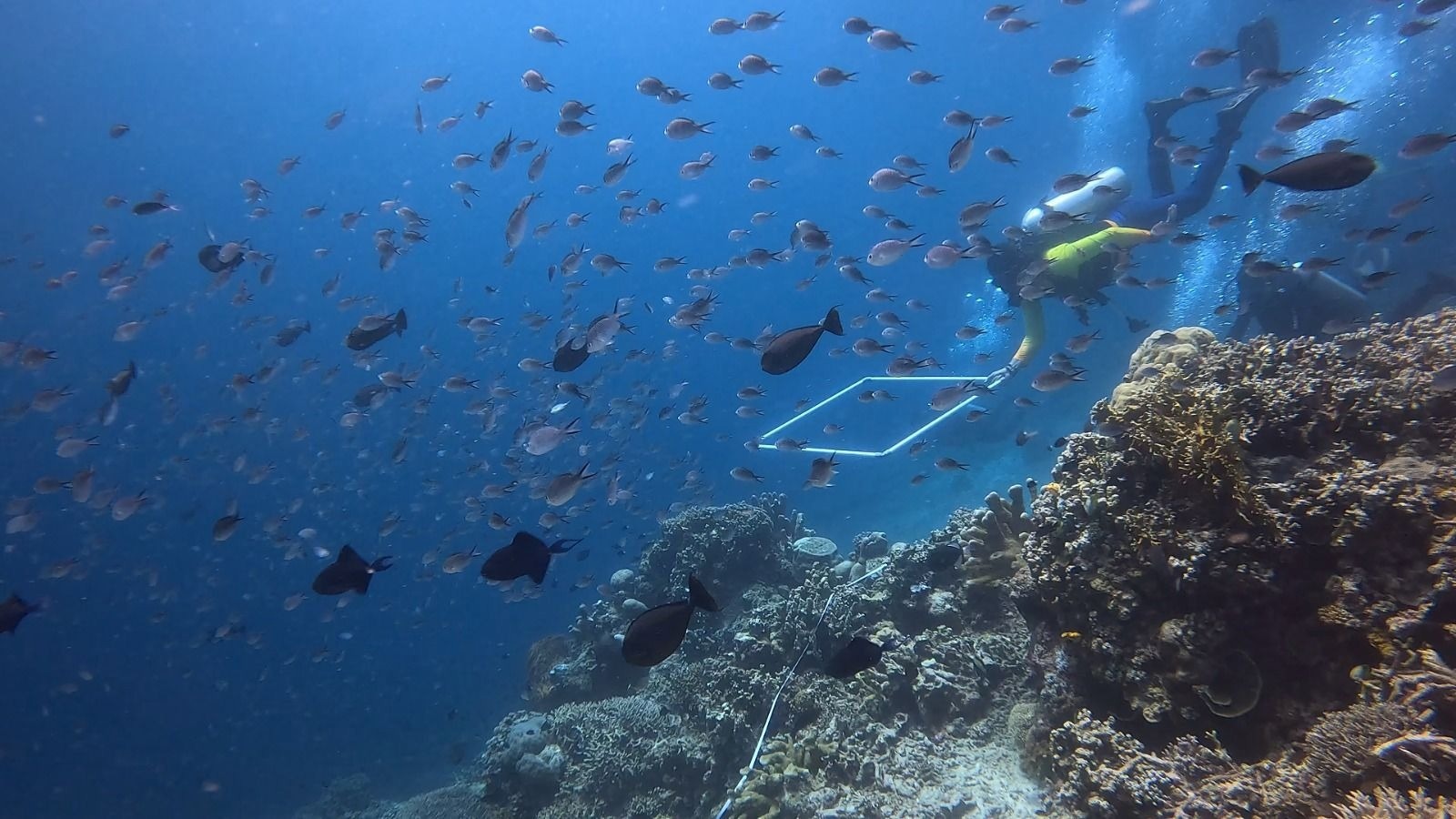The health of the world's coral reefs is once again under severe threat, as scientists from the National Oceanic and Atmospheric Administration (NOAA) and the International Coral Reef Initiative (ICRI) have confirmed the onset of the fourth global coral bleaching event, marking a critical environmental issue that spans the Atlantic, Pacific, and Indian Oceans. This phenomenon has been evident since February 2023, with significant damage observed in both hemispheres across these vast oceanic expanses.

In March 2024, WCS trained 30 scientists from across the Coral Triangle in simple field methods to measure coral bleaching and identify climate-resilient coral reefs. Working together, scientists can improve forecasts of climate-resilient coral reefs that are critical to global conservation efforts, such as protecting 30% of the world’s oceans by 2030. Image Credit: Emily Darling/WCS.
Coral bleaching occurs when corals, stressed by elevated sea temperatures and other environmental factors, expel the symbiotic algae living in their tissues. This algae provides the coral with much of its color and, more importantly, its primary food source. Without these algae, the coral turns white and loses its main energy source, leaving it undernourished and vulnerable to disease. If the stress caused by warming waters persists, the corals may not recover, leading to widespread mortality.
Derek Manzello, Ph.D., coordinator for NOAA’s Coral Reef Watch (CRW), emphasizes the gravity of the situation.
He explains, "From February 2023 to April 2024, significant coral bleaching has been documented in both the Northern and Southern Hemispheres of each major ocean basin."
This bleaching does not immediately spell the end of coral. If temperatures stabilize, the coral can regain its algae and recover. However, the frequency and intensity of recent bleaching events cast a shadow on the resilience of these marine ecosystems.
The Future of Tourism, Fishing and Coastal Protection
The broader implications of coral degradation extend beyond environmental concerns. Economies relying on coral reefs for tourism, fishing, and coastal protection face dire consequences.
“As the world’s oceans continue to warm, coral bleaching is becoming more frequent and severe,” Manzello said. “When these events are sufficiently severe or prolonged, they can cause coral mortality, which can negatively impact the goods and services coral reefs provide that people depend on for their livelihoods.”
The International Coral Reef Initiative and the National Oceanic and Atmospheric Administration Partnership
Addressing this global crisis, the ICRI, a partnership that includes NOAA and is co-chaired by the U.S. Department of State, is leading efforts to enhance coral resilience through proactive management and restoration techniques. This initiative draws on the experiences and lessons learned from previous bleaching events to refine strategies that can mitigate the impacts of climate change on these fragile ecosystems.
Jennifer Koss, director of NOAA’s Coral Reef Conservation Program (CRCP), stresses the importance of sustained, global efforts in combating this issue. “Climate model predictions for coral reefs have been suggesting, for years, that bleaching impacts would increase in frequency and magnitude as the oceans warm.”
“We are on the frontlines of coral reef research, management, and restoration, and are actively and aggressively implementing the recommendations of the 2019 Interventions Report.”
Jennifer Koss, CRCP
Innovations in coral management have included adaptations from NOAA’s strategic plan, emphasizing restoration and resilience. The 2023 Florida heatwave, for example, prompted the deployment of strategies from the "Mission: Iconic Reefs" program, such as relocating coral nurseries to deeper, cooler waters and utilizing sunshades to protect vulnerable corals.
Moreover, ongoing monitoring and data collection by networks like the Global Coral Reef Monitoring Network provide critical insights into coral reefs' health and recovery patterns worldwide.
Dr. Britta Schaffelke, from the Australian Institute of Marine Science, highlights the role of such data: “They allow us to quantify coral mortality, track recovery, and identify areas that don’t recover naturally and may need further protection or a helping hand through innovative interventions.”
As the community of global coral researchers and conservationists continues to tackle this burgeoning crisis, public awareness and engagement remain pivotal. To this end, the ICRI has launched the "Coral Bleaching Hub" and is preparing for an upcoming webinar on May 14, 2024, to discuss the current status of this global bleaching event and explore further actions.
By advocating for shared methodologies and data platforms like the Wildlife Conservation Society (WCS)-led global platform MERMAID, recent findings can pinpoint the locations of climate-resilient coral reefs, which should be integral to national biodiversity action plans.
Underwater with MERMAID in Belize | WCS
Video Credit: Wildlife Conservation Society/YouTube.com
In 2023, the WCS found that three types of climate-resistant coral reefs can avoid bleaching. These are called avoidance, resistance, and recovery reefs.
“Temperatures are off the charts,” says Dr Emily Darling, Director of Coral Reefs at the WCS. “While many corals are suffering from extreme heat stress and bleaching, some locations and species show different types of natural resilience. Finding and conserving these priority coral reefs are critical to any global strategy to safeguard the planet’s oceans and blue economies.”
The increasing pressures of climate change are testing the resilience of coral reefs. However, through concerted global action and innovative intervention strategies, there is hope that these critical ecosystems can endure and continue to thrive.